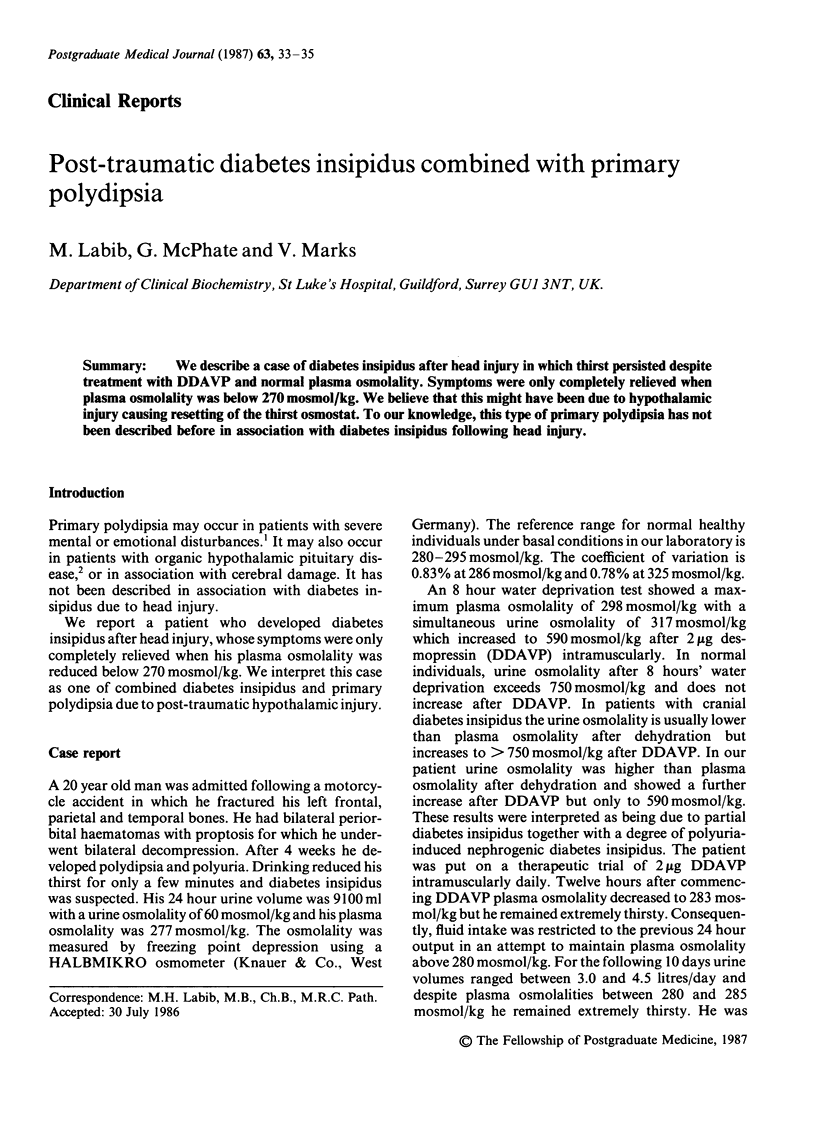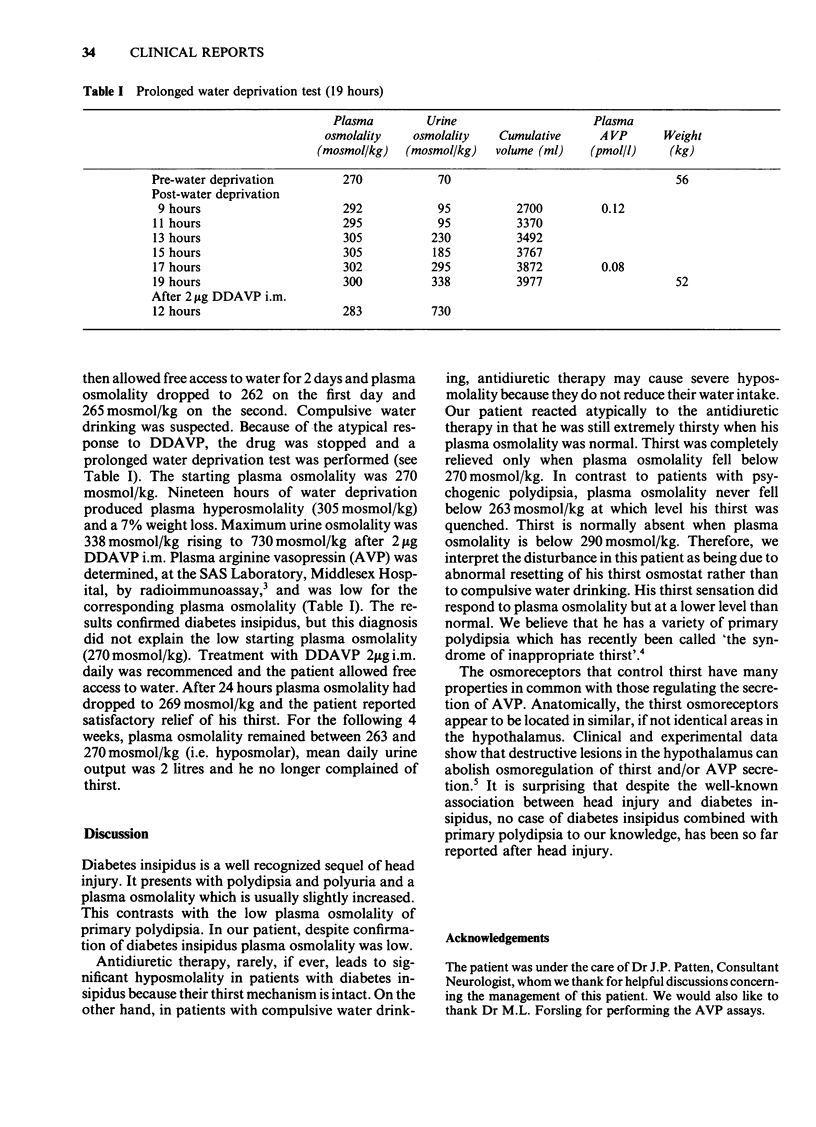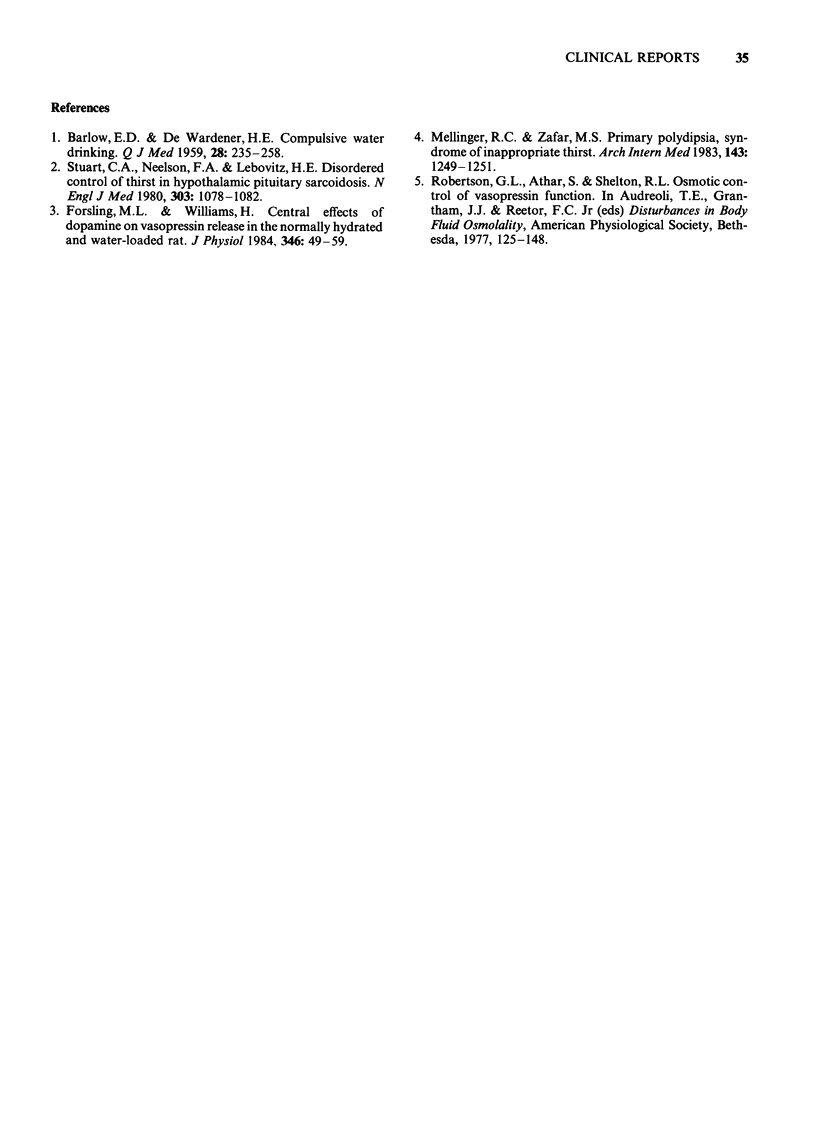Abstract
We describe a case of diabetes insipidus after head injury in which thirst persisted despite treatment with DDAVP and normal plasma osmolality. Symptoms were only completely relieved when plasma osmolality was below 270 mosmol/kg. We believe that this might have been due to hypothalamic injury causing resetting of the thirst osmostat. To our knowledge, this type of primary polydipsia has not been described before in association with diabetes insipidus following head injury.
Full text
PDF


Selected References
These references are in PubMed. This may not be the complete list of references from this article.
- BARLOW E. D., DE WARDENER H. E. Compulsive water drinking. Q J Med. 1959 Apr;28(110):235–258. [PubMed] [Google Scholar]
- Forsling M. L., Williams H. Central effects of dopamine on vasopressin release in the normally hydrated and water-loaded rat. J Physiol. 1984 Jan;346:49–59. doi: 10.1113/jphysiol.1984.sp015006. [DOI] [PMC free article] [PubMed] [Google Scholar]
- Mellinger R. C., Zafar M. S. Primary polydipsia. Syndrome of inappropriate thirst. Arch Intern Med. 1983 Jun;143(6):1249–1251. doi: 10.1001/archinte.143.6.1249. [DOI] [PubMed] [Google Scholar]
- Stuart C. A., Neelon F. A., Lebovitz H. E. Disordered control of thirst in hypothalamic-pituitary sarcoidosis. N Engl J Med. 1980 Nov 6;303(19):1078–1082. doi: 10.1056/NEJM198011063031902. [DOI] [PubMed] [Google Scholar]


